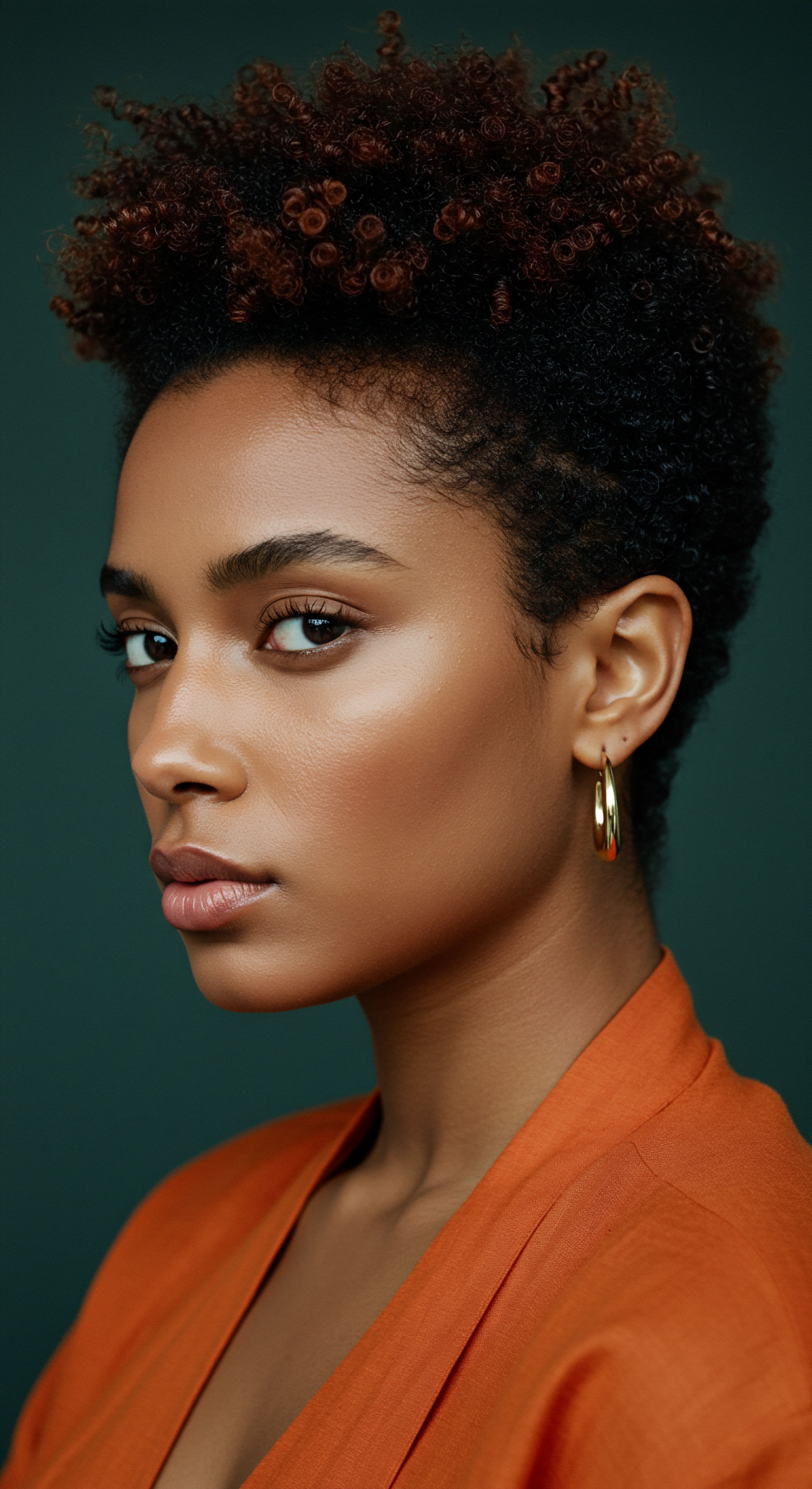
Roots
Consider for a moment the quiet strength residing within each strand of textured hair. It is a story told not just in the visible curl or coil, but in the unseen interactions that shape its very existence. For too long, the true science of these interactions, often termed tribology, has remained a whispered secret, overshadowed by quick fixes and surface-level solutions.
Yet, a deep consideration of how textured hair behaves under friction, how it resists or succumbs to wear, and how lubricants can offer solace, unlocks a pathway to profound care and lasting vitality. This fundamental understanding is not merely academic; it is the very bedrock upon which truly supportive hair wellness is built.
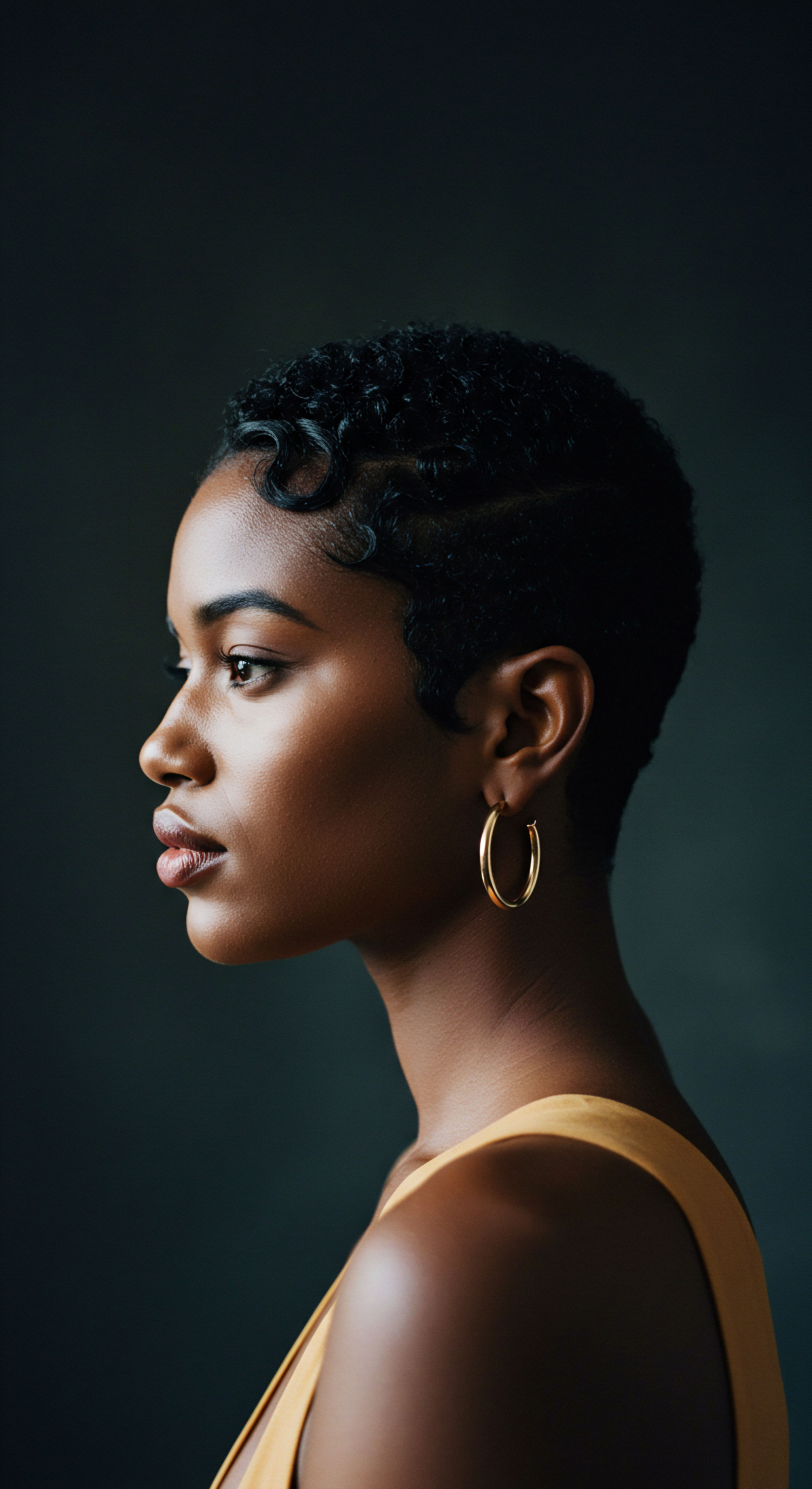
What is Hair Tribology? A Microscopic View
Hair tribology is the study of how hair interacts with itself, with tools, and with its environment through friction, wear, and lubrication. On a grand scale, we might observe a comb gliding through strands or a bonnet protecting a nightly style. On a microscopic scale, however, this field examines the subtle dance between individual hair fibers, the minute cuticle scales that interlock or resist, and the delicate film of moisture or product that either eases or impedes movement. For textured hair, this intricate dance is particularly complex due to its unique structural characteristics.
The external layer of each hair shaft, the cuticle, resembles overlapping roof tiles. These scales are the primary point of contact during any interaction. When hair fibers rub against one another or against external surfaces, these scales can lift, chip, or even detach, leading to increased friction and potential damage. The goal of hair tribology, therefore, is to comprehend these interactions to minimize detrimental effects and promote the overall health of the hair.

The Unique Architecture of Textured Hair
Textured hair, encompassing a spectrum from waves to tight coils, possesses a distinct anatomical blueprint that sets it apart. Unlike straight hair, which often exhibits a round cross-section and a relatively smooth, linear path, textured hair typically features an elliptical or flattened cross-section and a helical, curvilinear growth pattern. This inherent shape creates natural points of stress and curvature along the fiber, making it inherently more susceptible to mechanical strain.
The unique, curvilinear structure of textured hair inherently predisposes it to greater mechanical strain and inter-fiber friction.
The cuticle scales on textured hair tend to be more raised at the bends and curves of the strand. This lifted nature means there is a greater likelihood of adjacent strands interlocking or snagging, contributing to tangles and knots. When attempts are made to detangle or style such hair, the increased surface area contact and potential for snagging directly translate to higher frictional forces. These forces, if not managed with thoughtful consideration, can compromise the hair’s integrity, leading to breakage and diminished length retention.
Beyond the external cuticle, the internal structure, or cortex, also plays a role. The distribution of keratin proteins within textured hair can be asymmetrical, contributing to its curl pattern and affecting its mechanical properties. This internal variance, coupled with the external morphology, means that textured hair experiences different stress distributions compared to straight hair when subjected to external forces like combing or brushing.

Why Hair Tribology Matters for Textured Hair
Understanding the tribological behavior of textured hair is not merely an academic exercise; it forms the foundation for effective care practices. Without this knowledge, individuals may inadvertently contribute to damage through routines that exacerbate friction and wear. For instance, vigorous towel drying, dry detangling, or using inappropriate styling tools can all elevate frictional forces to damaging levels.
A scientific appreciation of how hair fibers interact allows for the selection of products and techniques that actively reduce friction, provide optimal lubrication, and shield the hair from abrasive wear. This perspective moves beyond generic advice, offering precise guidance tailored to the inherent characteristics of textured strands. It transforms hair care from a trial-and-error process into an informed, intentional practice that respects the hair’s natural inclinations and vulnerabilities.

Ritual
As we move from the foundational understanding of hair’s hidden physics, our attention naturally shifts to the daily and weekly rituals that shape our textured strands. The routines we cultivate, the tools we choose, and the formulations we apply are not simply steps in a regimen; they are active engagements with our hair’s tribological landscape. Each gesture, from the gentle cascade of water during cleansing to the rhythmic movement of a detangling tool, either eases the hair’s journey or introduces moments of stress. Recognizing these touchpoints allows us to transform routine into a thoughtful practice, minimizing resistance and maximizing the hair’s innate resilience.
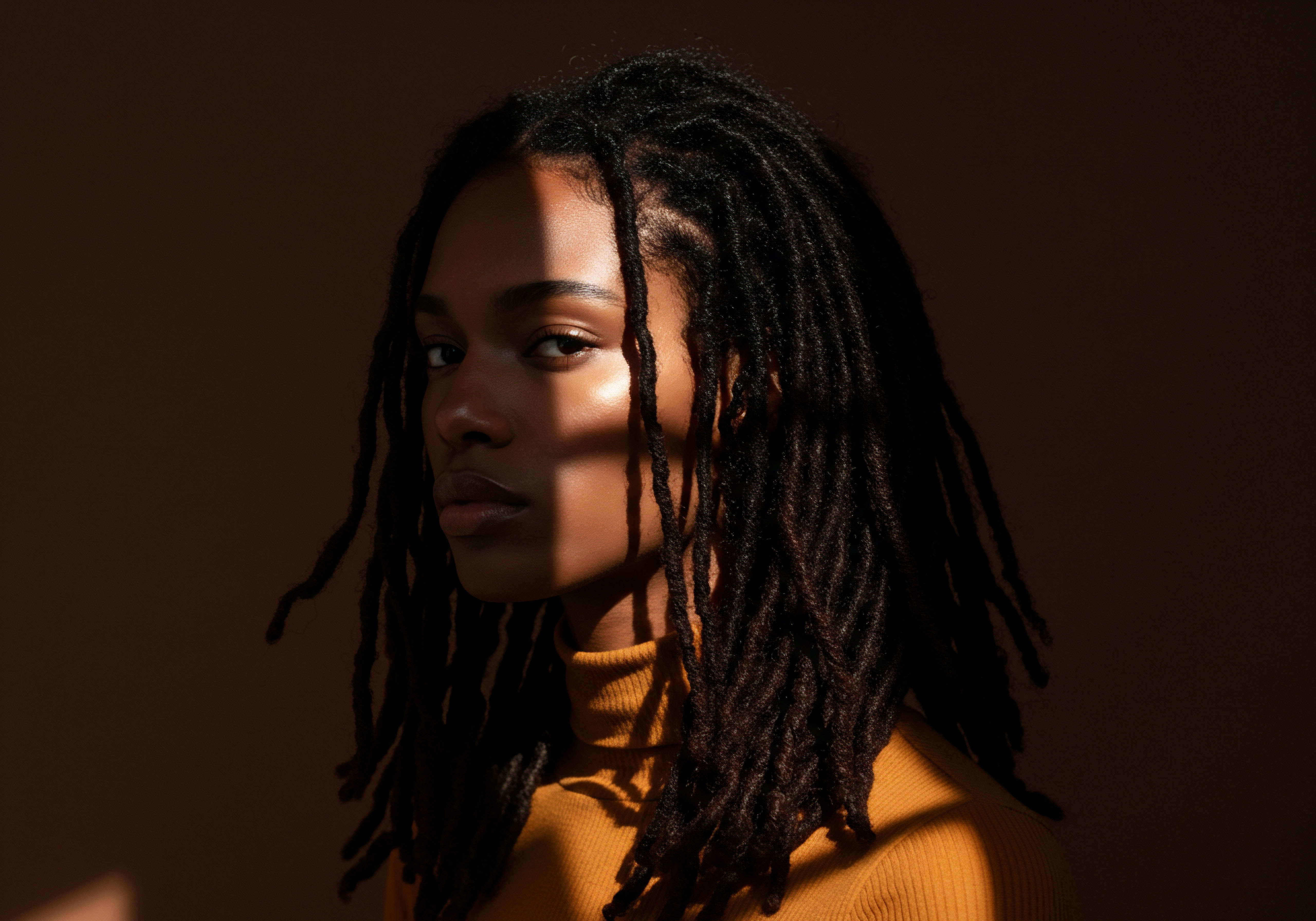
The Everyday Dance of Friction and Lubrication
Our hair care practices are, at their core, a series of tribological events. Consider the simple act of washing. Water, while essential for cleansing, can also temporarily increase the friction between hair strands as the cuticle scales swell and lift. This is particularly noticeable with textured hair, where the natural curl patterns create more contact points between fibers.
The type of shampoo, its slip, and how it is applied directly influence the friction experienced during this phase. Similarly, the detangling process, a cornerstone for many with textured hair, is a direct confrontation with inter-fiber friction. Improper technique or the absence of sufficient lubrication can lead to significant mechanical damage.
Styling also presents its own tribological challenges. The tension applied during braiding, twisting, or coiling, the friction generated by brushes or combs, and the interaction with various fabrics from clothing to bedding all contribute to the cumulative wear on the hair shaft. Without an understanding of these forces, individuals may inadvertently perpetuate cycles of breakage and dryness, mistaking symptoms for the root cause.
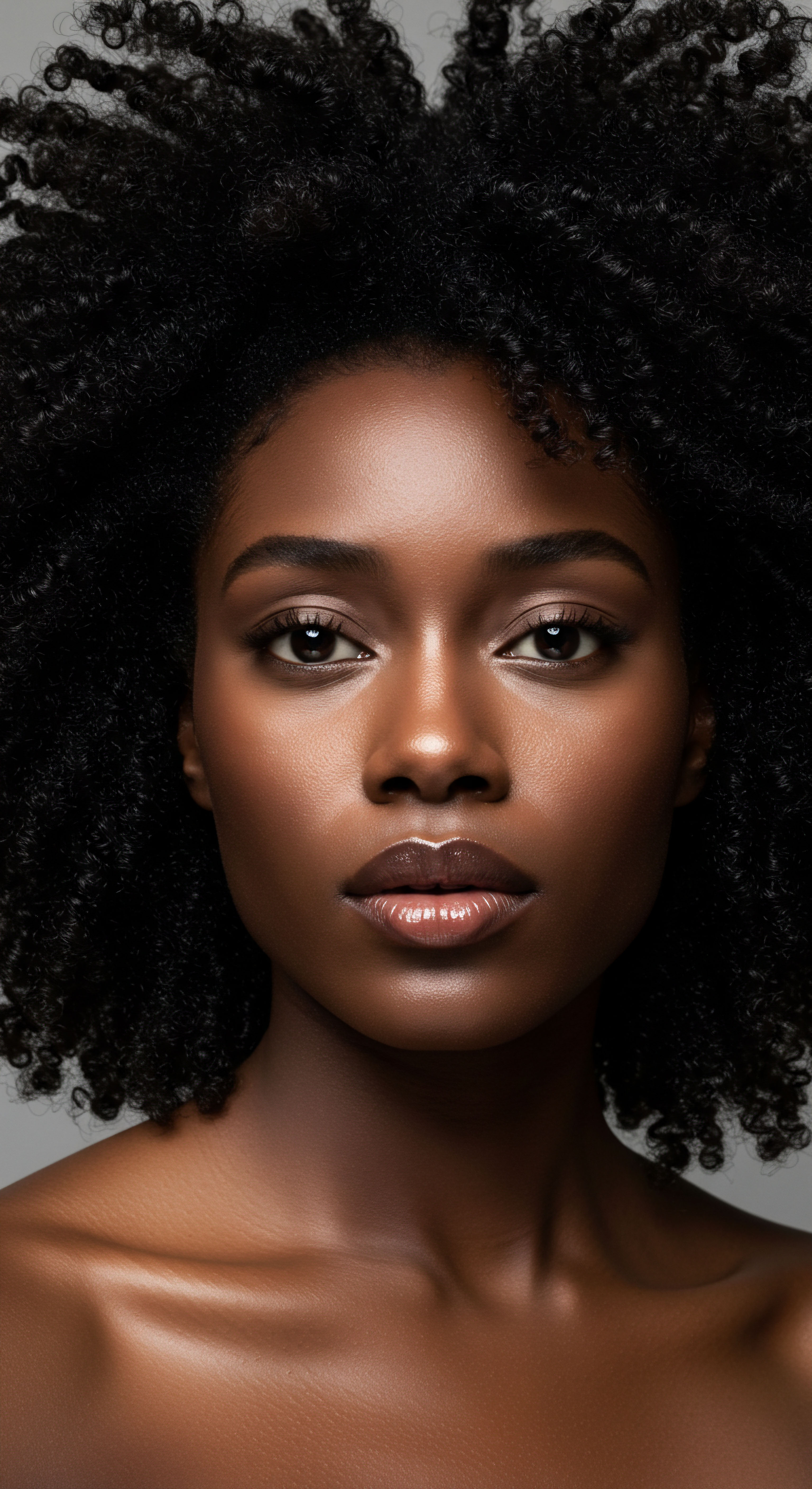
Tools of Engagement
The implements we use on our hair play a significant part in its tribological experience. The material, design, and even the cleanliness of combs and brushes directly influence the friction they generate. For example, wide-tooth combs or specialized detangling brushes with flexible bristles are often recommended for textured hair because their design minimizes snagging and distributes tension more evenly, reducing localized friction.
| Tool Type Fine-tooth comb |
| Typical Impact on Friction High friction, snagging |
| Best Practice for Textured Hair Avoid dry use; use only on wet, conditioned hair with extreme care. |
| Tool Type Wide-tooth comb |
| Typical Impact on Friction Lower friction, less snagging |
| Best Practice for Textured Hair Ideal for detangling wet, conditioned hair. |
| Tool Type Bristle brush |
| Typical Impact on Friction Variable friction based on bristle type |
| Best Practice for Textured Hair Choose soft, flexible bristles; use for styling, not detangling. |
| Tool Type Satin/Silk Bonnet |
| Typical Impact on Friction Significantly reduced friction |
| Best Practice for Textured Hair Essential for nightly protection against abrasive fabrics. |
Beyond styling tools, the fabrics that touch our hair during sleep or throughout the day also matter. Cotton pillowcases, for instance, have a rougher surface compared to silk or satin, creating more friction as hair rubs against them. This constant rubbing can lead to raised cuticles, tangles, and eventually, breakage. Shifting to smoother fabrics for sleep protection, such as a satin bonnet or pillowcase, becomes a deliberate act of reducing friction and preserving hair integrity, a simple yet powerful tribological adjustment.
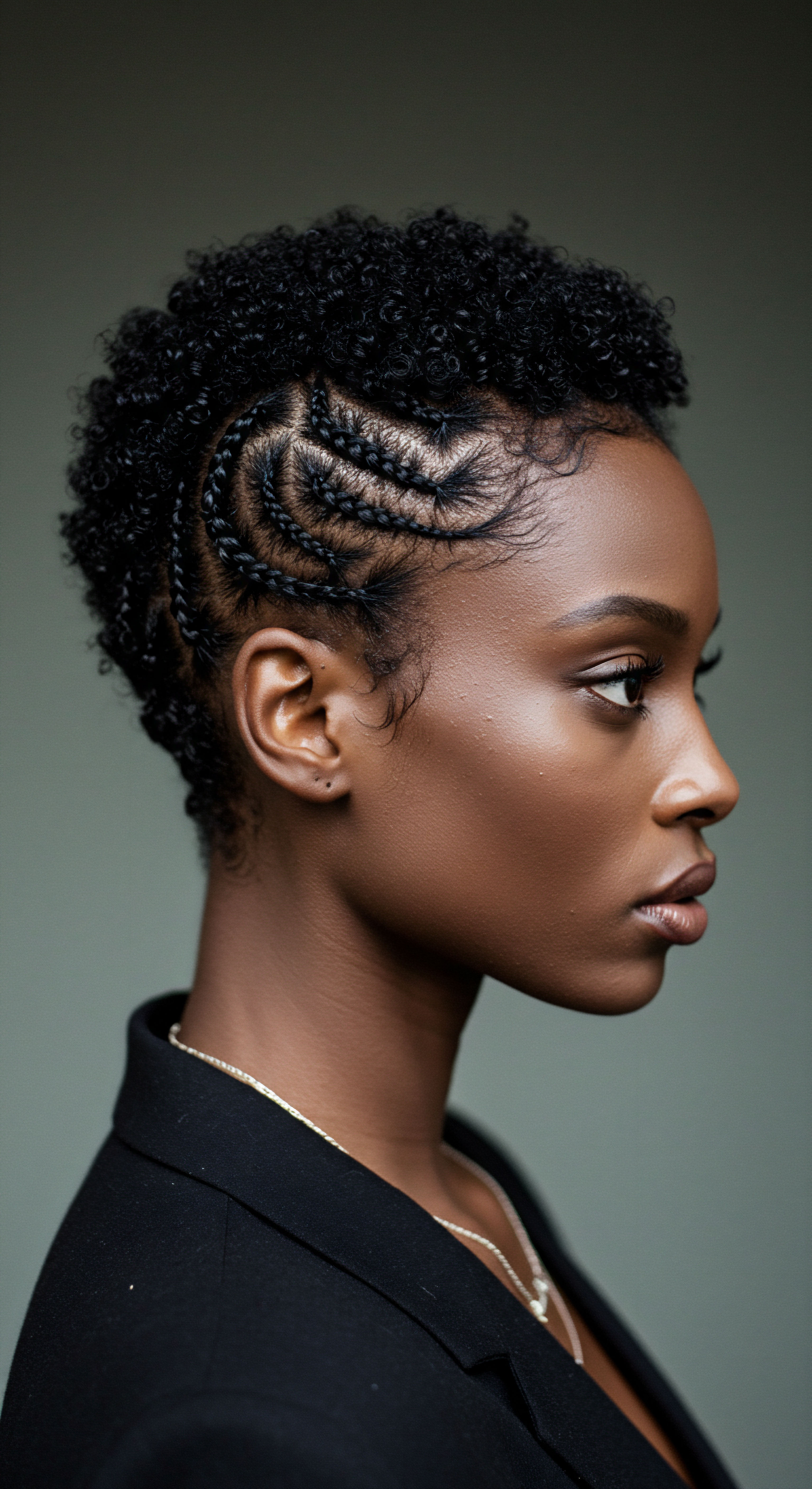
Formulations for Fluid Movement
Hair care products are not just about scent or feel; their fundamental role in textured hair care is often tribological. Conditioners, leave-ins, and styling creams are formulated to provide a lubricating layer that reduces the coefficient of friction between hair strands and between hair and external surfaces. Ingredients like silicones, fatty alcohols, and various oils create a smooth film that allows strands to glide past each other with less resistance.
Understanding the specific needs of textured hair means recognizing that products must offer substantial slip and conditioning. A product that works well for straight hair might be insufficient for the demands of a coily pattern, where inter-fiber friction is naturally higher. The efficacy of a detangler, for example, is directly tied to its ability to lower friction, allowing tangles to loosen without undue force.
Thoughtful product selection hinges on their capacity to provide meaningful lubrication and minimize friction, a critical factor for textured hair.
- Slip Agents ❉ Components like behentrimonium methosulfate or cetrimonium chloride are designed to smooth the cuticle, reducing friction during detangling.
- Emollients ❉ Oils and butters such as shea butter or coconut oil coat the hair shaft, creating a protective, low-friction surface.
- Humectants ❉ Ingredients like glycerin or hyaluronic acid attract and hold moisture, contributing to hair’s suppleness and reducing brittleness that can lead to friction-induced damage.
The application method of these products also holds tribological significance. Applying conditioner evenly from root to tip, ensuring each strand is coated, maximizes the lubricating effect. Working products through in sections, rather than attempting to detangle a large mass of hair at once, further reduces the localized friction and stress on individual strands. This deliberate, sectional approach is a practical application of tribological principles in daily care.

Relay
Stepping beyond the immediate practices, we arrive at a more profound exploration of hair tribology, one that connects the microscopic world of the hair fiber to broader cultural practices and the cutting edge of scientific inquiry. The intricate dance of forces at play on a single strand holds echoes in the collective wisdom passed down through generations, and it demands our deeper consideration, revealing how science and heritage often converge in surprising ways.

The Microscopic Dynamics of Damage
At the heart of tribology lies the precise measurement of friction and wear. For textured hair, this involves looking at the behavior of cuticle scales under stress. When hair is dry or improperly lubricated, the coefficient of friction increases, meaning more force is needed to move one strand past another or to pass a comb through the hair. This elevated force can lead to significant structural alterations.
Research utilizing advanced techniques like atomic force microscopy (AFM) allows scientists to examine the hair surface at an incredibly fine resolution, revealing the subtle changes that occur with various treatments and mechanical interactions. These studies show that even seemingly benign actions, when repeated without proper tribological consideration, can lead to lifting, chipping, and ultimately, the complete removal of cuticle cells. Once the protective cuticle is compromised, the inner cortex becomes exposed, making the hair vulnerable to moisture loss and further mechanical damage, leading to brittleness and breakage.
Consider the findings from Konno, Asanuma, and Nonomura (2024), who investigated the friction dynamics of different hair types. Their research, employing a sinusoidal motion friction evaluation system, reported kinetic friction coefficients for hair fibers fixed on a glass plate. For straight, curly, and wavy hair, the coefficients in the inward direction toward the hair root were measured as 0.47 ± 0.04, 0.51 ± 0.02, and 0.54 ± 0.04, respectively. While these single-fiber values show slight variations, the more striking observation arose when hair bundles were tested.
Straight and curly hair bundles, when rubbed in the inward direction, exhibited an oscillation pattern in their friction coefficient, indicating a “stick-slip” phenomenon. This stick-slip behavior, where friction rapidly builds and then suddenly releases, was particularly pronounced in straight hair bundles due to their densely arranged cuticles. This finding suggests that while textured hair may feel rougher due to its helical structure and greater inter-fiber contact, the specific mechanics of cuticle interaction during friction can present distinct challenges across different hair types, underscoring the complexity of hair’s surface behavior.
The intricate dance of friction at the hair’s surface, particularly the stick-slip phenomenon, highlights the complex tribological challenges unique to each hair type.

The Impact of Chemical Treatments on Tribology
Beyond daily manipulation, chemical processes significantly alter the tribological profile of hair. Treatments such as bleaching, coloring, and relaxing involve chemical reactions that can compromise the hair’s external lipid layer, specifically the 18-methyleicosanoic acid (18-MEA) layer, which provides natural hydrophobicity and reduces inter-fiber friction. When this protective layer is diminished or removed, the hair surface becomes more hydrophilic and prone to swelling, leading to increased friction and greater susceptibility to mechanical wear.
Research indicates that cosmetic treatments like bleaching can increase the hair’s friction coefficient by approximately 50% compared to virgin hair, along with an increase in acoustic vibratory level, signaling a decrease in the hair’s desirable sensorial properties. This shift in surface characteristics makes chemically processed textured hair even more vulnerable to damage during routine care. The added friction contributes to the perception of dryness and roughness, making detangling more challenging and accelerating cuticle degradation. This cyclical nature of damage underscores the critical need for post-treatment care that specifically addresses tribological restoration through targeted conditioning and lubricating agents.
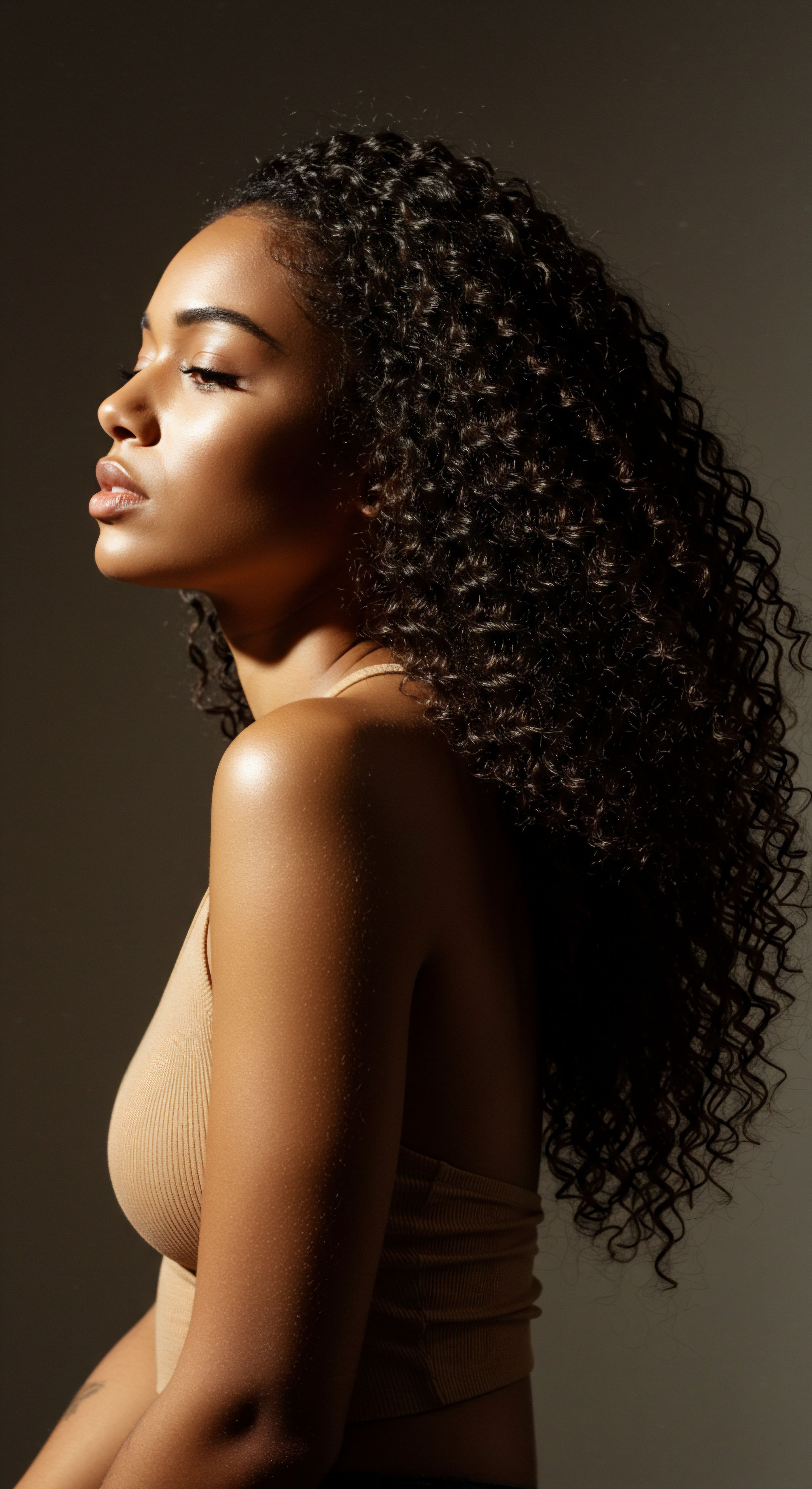
Cultural Practices and Tribological Wisdom
Long before the advent of scientific instruments to measure friction coefficients, various cultures developed sophisticated hair care practices that, unbeknownst to them, were deeply rooted in tribological principles. The ancestral use of oils, butters, and specific braiding or twisting techniques in African and diasporic communities served as a practical means of managing friction and protecting hair from environmental wear.
For instance, the application of natural oils like shea butter or coconut oil created a lubricating barrier, reducing the friction between strands and between hair and external elements. Protective styles, such as braids, twists, and cornrows, served to minimize direct exposure to friction, consolidate hair strands, and prevent tangling, thereby preserving length and minimizing breakage. These practices, often passed down through oral tradition, represent an intuitive understanding of hair mechanics.
A fascinating observation from tribological studies on Afro-textured hair relates to its interaction with water. While straight hair often becomes more difficult to comb when wet due to increased surface friction from swollen fibers, Afro-textured hair often becomes significantly easier to manage and detangle when thoroughly wetted and conditioned. This apparent paradox highlights a key tribological consideration ❉ for textured hair, the straightening effect of water, which reduces the physical interlocking of curls, outweighs the increase in surface friction caused by swelling. This insight guides the practice of detangling textured hair when wet and saturated with conditioner, a common and effective strategy.
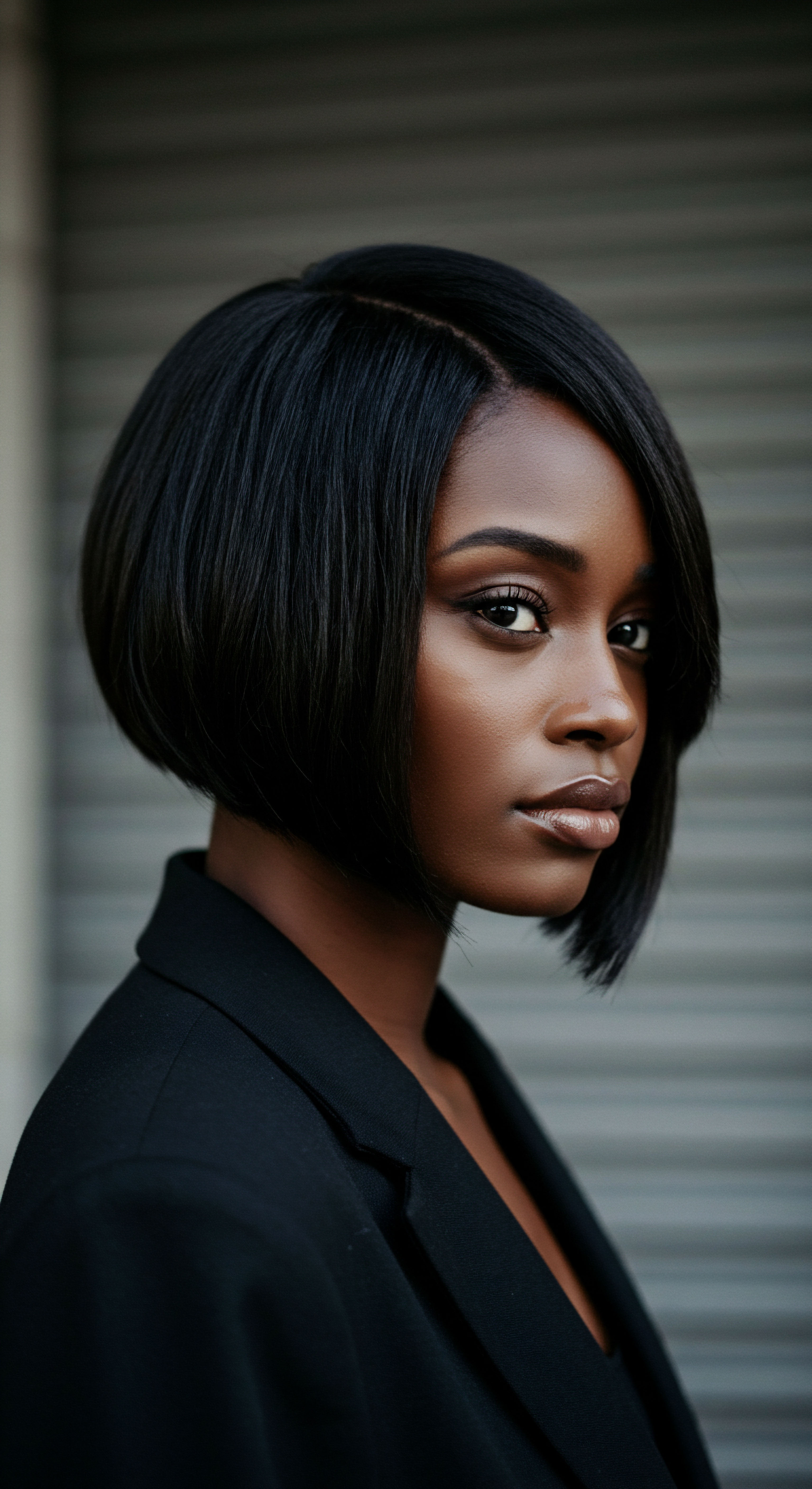
The Interplay of Environment and Hair Tribology
Environmental factors also play a significant role in hair’s tribological state. Humidity levels, for example, influence the hair’s moisture content, which in turn affects its mechanical properties and surface friction. In dry environments, hair can become brittle and more prone to breakage due to increased friction. Conversely, high humidity can cause textured hair to swell and frizz, leading to increased inter-fiber friction and tangling as strands expand and resist smooth movement.
Pollution, including particulate matter and chemical pollutants, can deposit on the hair surface, increasing its roughness and contributing to abrasive wear. Understanding these external stressors allows for the development of comprehensive care strategies that not only address intrinsic hair properties but also provide protection against environmental tribological challenges. This multi-dimensional approach ensures that hair care extends beyond simple aesthetics to encompass true hair health and resilience.

Reflection
Our journey through the landscape of hair tribology for textured strands reveals more than just scientific principles; it unveils a deeper appreciation for the nuanced care our hair deserves. From the hidden forces at play on each cuticle to the ancient wisdom embedded in cultural rituals, understanding friction, wear, and lubrication empowers us to move beyond superficial treatments. It invites us to cultivate a relationship with our hair that is informed, gentle, and profoundly respectful of its unique nature, paving the way for vibrant, resilient beauty that truly flourishes.

References
- Konno, S. Asanuma, K. & Nonomura, Y. (2024). Friction Dynamics of Straight, Curly, and Wavy Hair. Journal of Oleo Science, 73(5), 801-811.
- Robbins, C. R. (2002). Chemical and Physical Behavior of Human Hair (4th ed.). Springer-Verlag.
- Thieulin, C. Vargiolu, R. & Zahouani, H. (2019). Effects of cosmetic treatments on the morphology, biotribology and sensorial properties of a single human hair fiber. Wear, 426-427, 186-194.
- Gaines, M. Page, I. Miller, N. Greenvall, B. Medina, J. Irschickm, D. Southard, A. Ribbe, A. Grason, G. & Crosby, A. (2023). Reimaging Hair Science ❉ A New Approach to Classify Curly Hair Phenotypes via New Quantitative Geometric and Structural Mechanical Parameters. Accounts of Chemical Research, 56(11), 1330-1339.
- Ruetsch, S. B. Yang, B. & Kamath, Y. K. (2008). Cuticular damage to African-American hair during relaxer treatments—A microfluorometric and SEM study. IFSCC Magazine, 11, 131-137.
- Cloete, E. Khumalo, N. P. Van Wyk, J. C. & Ngoepe, M. N. (2019). Systems approach to human hair fibers ❉ interdependence between physical, mechanical, biochemical and geometric properties of natural healthy hair. Frontiers in Physiology, 10, 112.
- Dias, M. F. R. (2015). Hair Cosmetics ❉ An Overview. International Journal of Trichology, 7(1), 2-15.
- Campos, P. M. B. G. M. & Schunck, L. (2017). Hair Tribology. In Tribology in Biomedical and Biological Applications (pp. 1-20). Springer.
- Martins, R. A. & Silva, V. R. (2020). Hair structure and the properties of different ethnic hair types. Cosmetics & Toiletries, 135(1), 32-38.
- Daniels, G. Hameed, A. Tamburic, S. Gervasoni, G. Bhamidipati, S. & Guan, Y. (2023). Challenges with textured hair analysis ❉ single fibre and hair assembly assessments and statistical explorations. UAL Research Online.